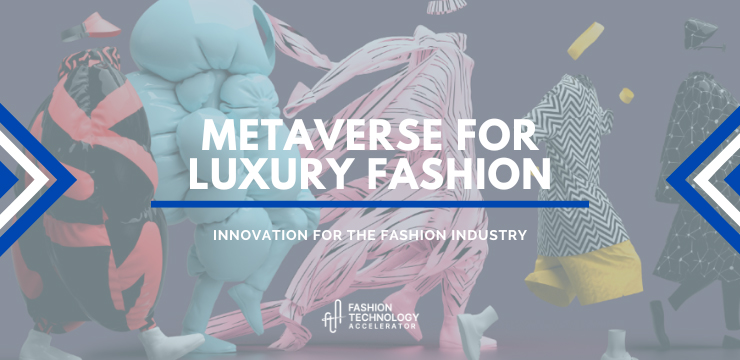
Purchasers, particularly Gen Z, are spending more and more time online, investigating the opportunities of the Metaverse. Here’s what fashion and luxury players need to know about this evolving frontier.
There is a lot of buzz surrounding the Metaverse, which could be defined as a hyper-interactive, creative, digital environment where people work, play, socialize, and, mainly, shop. While the Metaverse itself is just in its initial stages, there is plenty of curiosity about the potential it offers to brands, especially in the fashion industry; indeed, it could well provide luxury brands with engaging Gen Z and other tech-savvy, young consumers.
You will probably have already heard about the “Metaverse Fashion Week”, or MVFW, the first fashion show in the Metaverse.
From March 24 to 27 of this year, Decentraland, the decentralized platform based on blockchain Ethereum, hosted a real event dedicated entirely to fashion: four days of full digital immersion with a wide program of shows and shoppable collections, with the presence of pop-up stores, events, concerts, and after-parties, as in physical events.
Etro, Tommy Hilfiger, Dolce & Gabbana, and Philipp Plein are just some of the many brands that participated in the Metaverse Fashion Week, proving that more and more big fashion brands seem to have understood that there is a future in this new virtual dimension, where digital identity is as important as the physical one.
This is an evolution that, at a time when people are becoming increasingly aware of their limitations in the real world caused by pandemics and wars, will perhaps be able to give a new impetus to the economy and marketing of the sector.
Brands’ interest in the Metaverse is a quite recent trend. Just two years ago, at the height of the COVID-19 lockdowns, the fashion industry faced the challenge of finding solutions for presenting collections and keeping brand narratives strong in the digital sphere.
Since then, many top labels have embraced non-fungible tokens (NFTs) and cryptocurrency, using the virtual landscape to remain culturally relevant, curate experiences, and extend influence to reach a whole new, tech-savvy online audience.
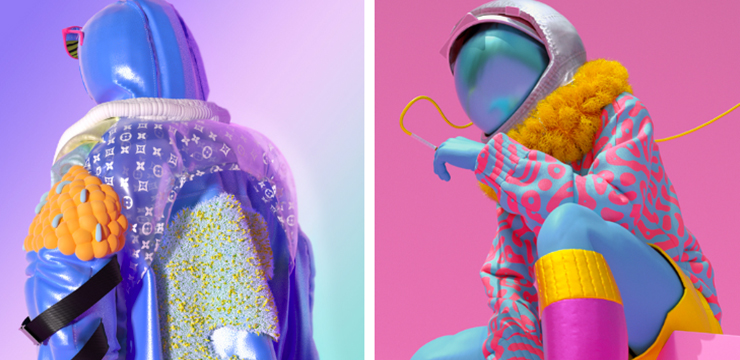
The great potential of events in the Metaverse lies in the strong contact with the consumers of the future, the Gen Z or the even more budding Gen Alpha, who are increasingly interested in buying digital goods.
According to a recent study, Gen Z consumers spend twice as much time interacting socially in the Metaverse as they do in real life. In turn, Gen Z consumers would like to see brands develop virtual stores, and 30% of them are receptive to brands that sell apparel to dress up digital avatars.
However, marketers need to be careful and not too intrusive, as 63% of respondents said they were concerned about data privacy in the Metaverse.
That said, the Metaverse seems to be a real goldmine for luxury fashion brands in the future. According to a US investment bank, the growing number of fashion companies directing spending and marketing expertise to capitalize on the Metaverse market could lead to customer demand exceeding $55 billion by 2030.
The Metaverse represents the idea of a parallel world, where blockchain, smart contracts, NFTs, cryptocurrencies, and Artificial Intelligence allow a fusion between the real and the virtual world.
Let’s see some opportunities fashion brands can exploit through the Metaverse:

Within the “blockchain Metaverse”, all transactions are governed by smart contracts. This means that both buying and selling activities, commercial agreements, and even private writings, pass through the writing of a computer contract whose nature is not modifiable and conditioned over time, to the rules established in the contract itself. This aspect guarantees fairness and security between the parties involved, allowing the implementation of new business opportunities in a creative way.
In fashion, when combined with tracking tags, blockchain can also track products through the entire supply chain, from raw material to factory and even to the consumer and beyond. It is a great tool for supply chain and inventory management, especially since the blockchain (i.e., the record of all information collected during an item’s journey) cannot be changed, improving traceability and transparency.
An important element of the Metaverse, especially considering monetization, are the so-called NFTs, crypto-assets which make a digital resource unique, determine its market value, and allow for transactions. Such transactions are then completed using cryptocurrency.
Both NFTs and cryptocurrencies are based on Blockchain.
Similarly, fashion brands coin garments as NFTs and sell them: this means that even though the image of a virtual garment can be seen or even saved by anyone on the Internet, the person who purchased it, either as a unique piece or as part of a limited run, can prove their ownership and subsequently sell or trade it, with the value increasing or decreasing, just as with a physical garment or other assets.
The textile sector has been strongly criticized for the environmental impact caused by its production processes. For this reason, many initiatives have led the fast fashion industry to undertake a transition in search of more environmentally sustainable solutions.
One such solution is the Metaverse: in augmented reality, clothes do not exist physically, but only virtually. Among digital creators, clothes are often bought just for a few shots or videos, or some particular event, and then forgotten.
This leads to continuous feeding of the production chain of the clothing industry, which results in waste of time, materials, energy, and overproduction. This problem might be solved in the Metaverse, inducing users to buy clothing only in the on-life to embellish their avatar, freeing the imagination in the virtual world, and making responsible choices in real life at the same time.
The Metaverse and the biggest luxury fashion brands have joined forces with a common goal: to reinvent the way consumers experience fashion using digital spaces and offer much more than just a piece of clothing.
Furthermore, this virtual reality represents an important touchpoint to intercept, capture the attention of the consumers of the future, the new generations such as Millennials and Gen Z, and be able to speak the same language as them, which is all digital. The Metaverse, a bit like social networks, is also an open and democratic space, an inclusive system where anyone can express their ideas and creativity.
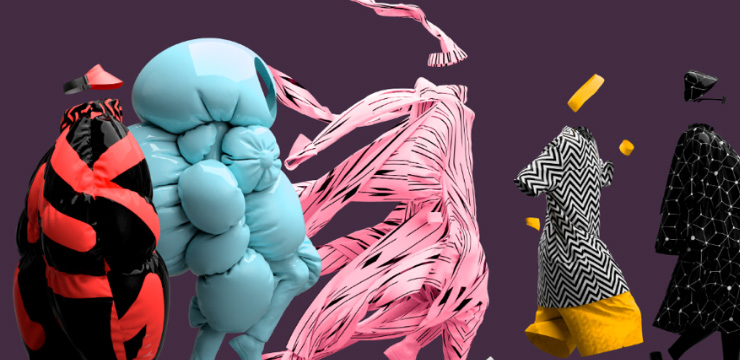
Luxury brands such as Burberry, Balenciaga, and Louis Vuitton are paving the way for a future of fashion in the Metaverse.
In the new frontier of the Metaverse, executives of luxury brands are starting to recognize the potential of augmented reality (AR) and virtual reality (VR), moving quickly to capitalize on this new marketing opportunity.
According to a recent study, 53% of fashion brands are investing $300bn in the gaming sector, experimenting with Instagram filters, digital avatars, and virtual stores.
One of the brands that have led the way in the race to the Metaverse has been Balenciaga, which has had several previous experiences in the digital world. One of these was represented by the launch of its own video game, Afterworld: The Age of Tomorrow, in which the Fall-Winter 2021 collection was presented.
Back in September 2021, Balenciaga announced its collaboration with Epic Games, the creator behind the popular computer game Fortnite. The brand designed four virtual outfits and various accessories for Fortnite avatars, available for players to purchase through the game.
Limited edition physical Balenciaga x Fortnite merchandise was also available through the brand’s shop and website. Balenciaga has also created its separate business division, solely dedicated to the Metaverse and its future lucrative opportunities.
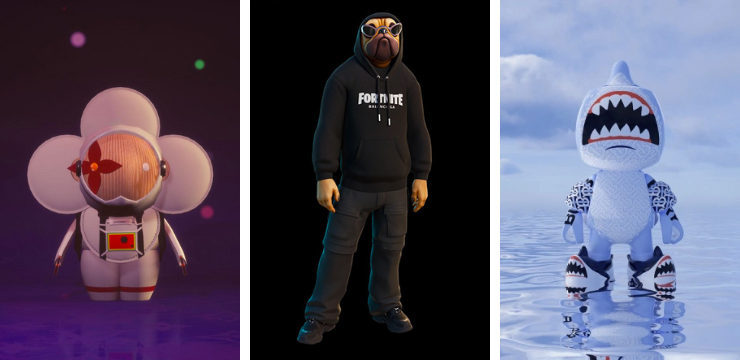
Burberry is one of the pioneers of fashion in the Metaverse, consistently creating innovative in-store experiences, and merging AR with physical products for a more engaging client experience.
In July 2021, Burberry announced its partnership with Mythical Games launching its Blankos Block Party game, an open-world multiplayer game in which players can purchase Blankos, which are NFTs that correspond to characters and live on the blockchain.
Adorned with Burberry’s TB summer monogram, the limited-edition Burberry Blanko Sharky B NFT can be purchased, upgraded, and sold, as well as in-game NFT accessories, including a jetpack, armbands, and pool shoes.
By moving into Metaverse fashion with these playable NFTs, Blankos Block Party has created a new play-to-earn economy, paving the way for a future of digital ownership in gaming.
To celebrate the 200th anniversary of the birth of its founder, Louis Vuitton has proposed in the Metaverse its own video game with collectable NFT that traces the birth of the brand with the historical mascot Vivienne: “Louis The Game”.
Once you enter Louis the Game, you’re able to customize your character with different Louis Vuitton monogram prints and colourways, and you get to learn about LV’s history throughout by collecting postcards and other memorabilia.
Most notably, like the other luxury brands, also LV is beginning to explore the world of cryptocurrency, indeed there are 30 embedded NFTs you can find throughout the game, designed by artist Beeple; each NFT is a collectable that can only be found through playing the game, and cannot be sold.
The game is also a way for LV to tap into its younger audience, the Gen-Z consumers that are hard to impress, by creating a challenge that everyone can be a part of. It is a way to be a part of the LV universe, as well as the perfect opportunity for the brand to introduce itself to new consumers.
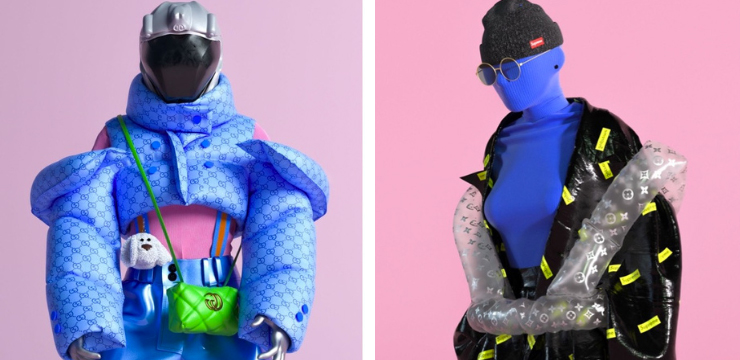
The Metaverse will not be a new reality that will overlap our lives, but a virtual world that will become an integrated part of the physical world. A phygital reality conceived in this way represents a very attractive and interesting opportunity for many brands that are already experimenting in the Metaverse with new forms of interaction with their audience.
This will require a radical change in companies’ approach to customer engagement, branding, product development, innovation, and, ultimately, the entire business model.
Companies are asking themselves how they should think about the Metaverse as they shape future strategies: what investments should they make today to be ready for the Metaverse tomorrow?
Just as digital transformation keeps forcing companies to evolve in every aspect of their business, similarly immersive or Metaverse transformation will be necessary; companies need to start taking this into account in their short- and long-term vision, to develop an effective strategy behind it.
Like at the threshold of every new technological wave, there are conflicting visions of utopia and dystopia; the Metaverse is no different. While we cannot fully imagine the full range of benefits or risks that will emerge, it seems that we are about to launch into a new dimension of the human experience.
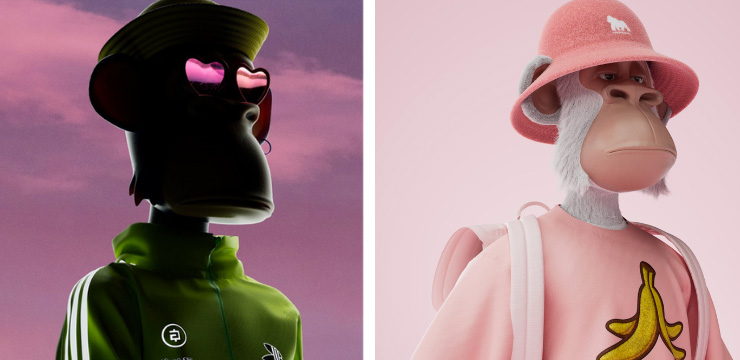
At least as widespread as the support for the Metaverse is the criticism surrounding it. At the top of the list, you will often find terms like “overhyped”, “buzzword” and “marketing trend”, and to be fair, it does seem like the Metaverse is still far – probably years – from being what many expect it to be, and even further away from mass adoption.
Whatever your opinion on this might be, though, there are several other very real concerns when it comes to the Metaverse.
By definition, as a parallel reality, the Metaverse provides another platform for many of the issues present in the real world, ranging from inequality regarding access (especially when requiring costly hardware such as VR goggles) to discrimination and exploitation – a long way off from the more democratic and inclusive universe proponents envision.
The anonymity inherent in virtual worlds further gives way to behaviours such as discrimination, abuse and, of course, scamming and fraud. The fact that cybersecurity is a concern well beyond the Metaverse, having users exposed to additional risks, such as identity theft of their avatars, only adds to this.
Particularly as the legal and regulatory situation surrounding the metaverse is yet to be defined, this is concerning – not to mention the data collection and privacy dimension, especially with even more invasive monitoring of behaviours like eye movement tracking.
Looking at fashion in the Metaverse, it is also important to note that virtual fashion does not necessarily equal more sustainable fashion. The high environmental cost of Blockchain, used for integral parts of the Metaverse like cryptocurrency and NFTs, should not be disregarded – although new solutions with a lower carbon footprint are being developed and adopted.
Many have great expectations for the Metaverse, but it remains to be seen how much of these will really come true in the short run. There are numerous issues and concerns to be addressed that have become obvious already now, with more to come. It will be interesting to see where we will be a few years from now – and how much the Metaverse will really have changed our lives.

Giusy Cannone is Chief Executive Officer of Fashion Technology Accelerator.
She is the reference point for FTA’s corporate projects, also creating business connections for startups in the Acceleration Program and mentoring participants of our Masterclasses,